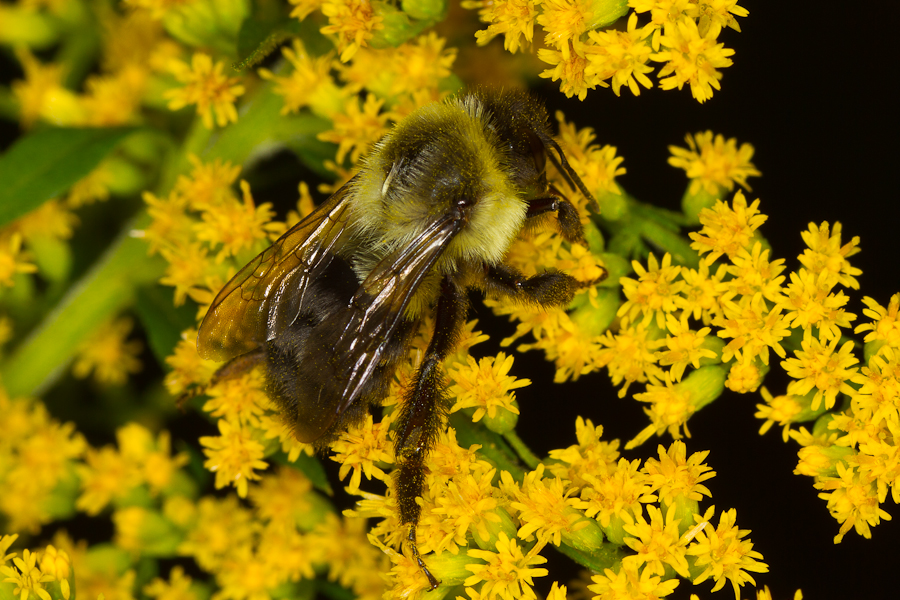Insect Settings
The problem with photographing insects in New York is that I get maybe 4 good months, and then it’s back to birds for 8 months. By the time insect season rolls around again, I’ve forgotten what I figured out last time. So once and for all, let me write this down.
FYI, these settings are all for relatively stationary insects and a 1:1 100mm macro lens. Butterflies and dragonflies (i.e. large flying insects) with a telephoto lens are something else entirely.
Daytime, no flash

- f/8, maybe f/11 for deeper insects
- shutter speed 1/400 s or faster
- ISO 400-1600 as necessary to get the shutter speed up.
- Check your histogram
Consider using a tripod, cable release, and/or reflector.
Daytime, fill flash
Still need to figure this one out, or whether it even makes sense.
Daytime, full flash
- f/11
- ISO 100
- shutter speed 1/250 s
- Flash exposure compensation -2/3 to -1
- Use an external battery pack

The key here is that with those settings, ambient light is nigh on nonexistent. The real shutter speed is the flash duration, which is much less than 1/250s. However backgrounds will be black.
Photographing Insects at Night
- Set the camera on M. Av and Tv modes don’t really work with the flash, and work even less when the flash doesn’t fire.
- f/22 or f/25
- ISO 100
- Shutter speed to 1/250s, maximum sync speed. At that aperture, only the flash matters anyway.
- Flash exposure compensation 0
- Manual focus, usually set at the minimum focusing distance
- Use an external battery pack
- Use a small flashlight held below the camera to illuminate the insect for shooting. Put the brightest spot on the insect and look for that in the viewfinder.
I’ve also had good results with f/29, ISO 200+, and +1 exposure compensation on the flash. Maybe +2/3 for white insects like Trichodezia albovittata.

